The Bridges of Venice

The History of Bridges
Venice is famous for being the city of canals, therefore there are 472 bridges connecting the 126 islands that make up the city. Surprisingly, there were no bridges in the city in its first 500 years.
Venice: Pre-Bridges

Fra Paolino Map, 1345
In the early days of the Serenissima Republic, the islands were further apart and boats were the only means of connection between them. As the islands got closer and closer (by a process of land reclamation), it became possible to wade across the channels on horseback.
Ponte de la Toletta
Those who could not afford a boat or a horse could take a short boat ferry (traghetto) across the wider canals. For the narrower canals, makeshift planks (tole) were laid out by local entrepreneurs who would charge a toll for people to cross.
Horses were common in Venice until the 1400s while the islands remained in their natural state. The streets were unpaved dirt roads and the squares were grazing fields (campi) for animals.
The application below allows you to select the year and see the island formation at that time.
Venice Today
Early Bridges
Erosion of the canal banks caused the canals to gradually fill in with silt which required periodic dredging. The excavated mud was used to enlarge the adjoining islands, which therefore got closer and closer. To avoid further erosion of the canal banks, Venetians began building stone embankments along the waterways. Gradually, the streets were also paved and eventually even the campi were covered with stone slabs (masegni), therefore making horseback riding more and more complicated.
Carpaccio, The Miracle of the Relic of the True Cross, 1494
As the city took shape, permanent wooden bridges were built. The most famous wooden bridge was the Rialto Bridge, which was the only one to cross the Grand Canal. Initially, it was a draw bridge to allow sailboats to pass through.
Ponte de la Canonica
In 1172, the first stone bridge, the Ponte de la Canonica was constructed. It was built after the assassination of Vital Michiele II in order to have a straight and protected road for the Doge to visit the Church of San Zaccaria.
What is a Venetian Bridge?
Traditionally, a bridge can be defined as anything that connects two strips of land and allows pedestrians or vehicles to cross over water, roads, or obstacles. However, in Venice, there are several situations where a more precise definition is needed.
Is This a Venetian Bridge?
Bridge-like Buildings: Any building that crosses over a body of water.
Examples: Chiesa di Santo Stefano (pictured), terrace of Compagnia della Vela
Elevated Bridges: Bridges that connect two parts of the same property over a canal at a level that is higher than street level.
Examples: Bridge of Sighs, Manifattura Tabacchi (pictured)
Marina Bridges: Bridges that connect different sections of a marina or boat docks.
Examples: San Giorgio Compagnia della Vela
Multiple-Bridges: Any number of bridges that connect to each other in the middle, rather than to land.
Tre Ponti (pictured), Ponte Pasqualigo e Avogadro
Temporary Bridges: Bridges that are created for festivities (Redentore, Salute, Morti) and disassembled afterwards. They are built on pontoons spanning a canal or other body of water.
Examples: Ponte Votivo del Redentore (pictured), Ponte Votivo della Salute
Trans-Lagoon Bridges: The two bridges (train bridge and car) that connect Venice to the mainland across the lagoon.
Ponte della Libertà
The Roles of Bridges
Aside from simply allowing for the mobility of pedestrians over the canals, bridges in Venice serve many other unique purposes, including: separating foot and boat traffic, housing utility lines, providing emergency exits, and protecting boats from rain.
One important function of Venetian bridges is separating foot traffic from boat traffic. Whereas in most cities automobile and pedestrian traffic often interact, in Venice, bridges separate them entirely.
More than just as a means of transportation, Venice's bridges literally keep the city running. Inside most bridges are utilities, such as electricity, gas, phone, internet, and water.
Aside from boats, bridges are the only way in and out of an island. In the case of an emergency, this means bridges are equivalent to emergency exits, and therefore should never be a place for traffic to stop.
An often overlooked use for bridges is their protection from precipitation. During rainstorms, it is common to find boaters, especially those in rowboats, waiting underneath bridges for the storm to pass.
Bridge Materials and Styles
Even though the earliest bridges were made of wood, over 70% of bridges in existence today are made of masonry (Istria stone).
Bridge Materials
Wooden Bridges: The first bridges to be built in Venice. Traditionally trapezoidal with two stepped legs and a minor base.
Stone Bridges: The first two documented stone bridges were the Ponte della Canonica and the Ponte de S.Provolo. They were built around 1172 A.D. to facilitate the annual procession of the Doge.
Iron Bridges: The cast-iron bridges of Venice are often built in the style of truss bridges. Today there are 21 metal bridges in Venice. Initially, the Ponte dell'Accademia was an iron toll bridge, as was the Ponte degli Scalzi.
Arch Styles
Stone bridges display a variety of arches corresponding to the architectural styles of the time.
Public Bridges vs. Private Bridges
While the vast majority of bridges in Venice are public, 83 are private. This means that they lead to a private home and not to a public street.
Public Bridges: The vast majority of bridges in Venice are public and allow for the flow of all pedestrians from one island to another.
Private Bridges: About 20% of the bridges in Venice connect a private home to a public road. Sometimes, these bridges will be gated off on the public road side for safety.
Drawbridges: Originally, the Rialto Bridge was a drawbridge. Today, there is only one remaining drawbridge. Drawbridges have the ability to open up in the middle to allow for the passage of tall boats or to stop unwanted pedestrians from crossing.
Multi-Arch Bridges: Many of the wooden bridges in Venice have multiple arches, however only one that exists is made of stone (Tre Archi).
Low or "Level" Bridges: Completely imperceptible by a crossing pedestrian, these flat bridges have no steps and don't allow the passage of boats underneath except during extremely low tides.
Notable Bridges
In the map below, we present some of the most notable bridges in Venice.
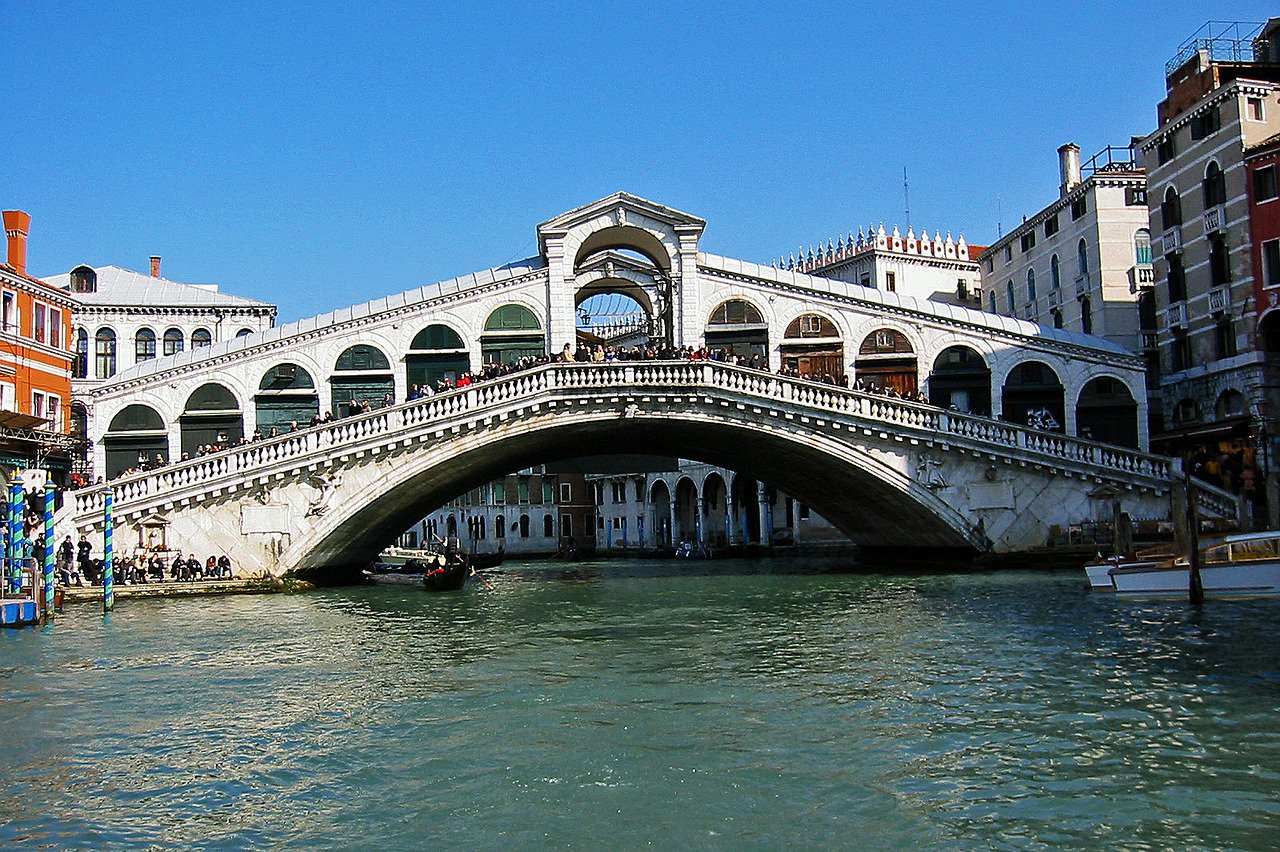
Ponte di Rialto
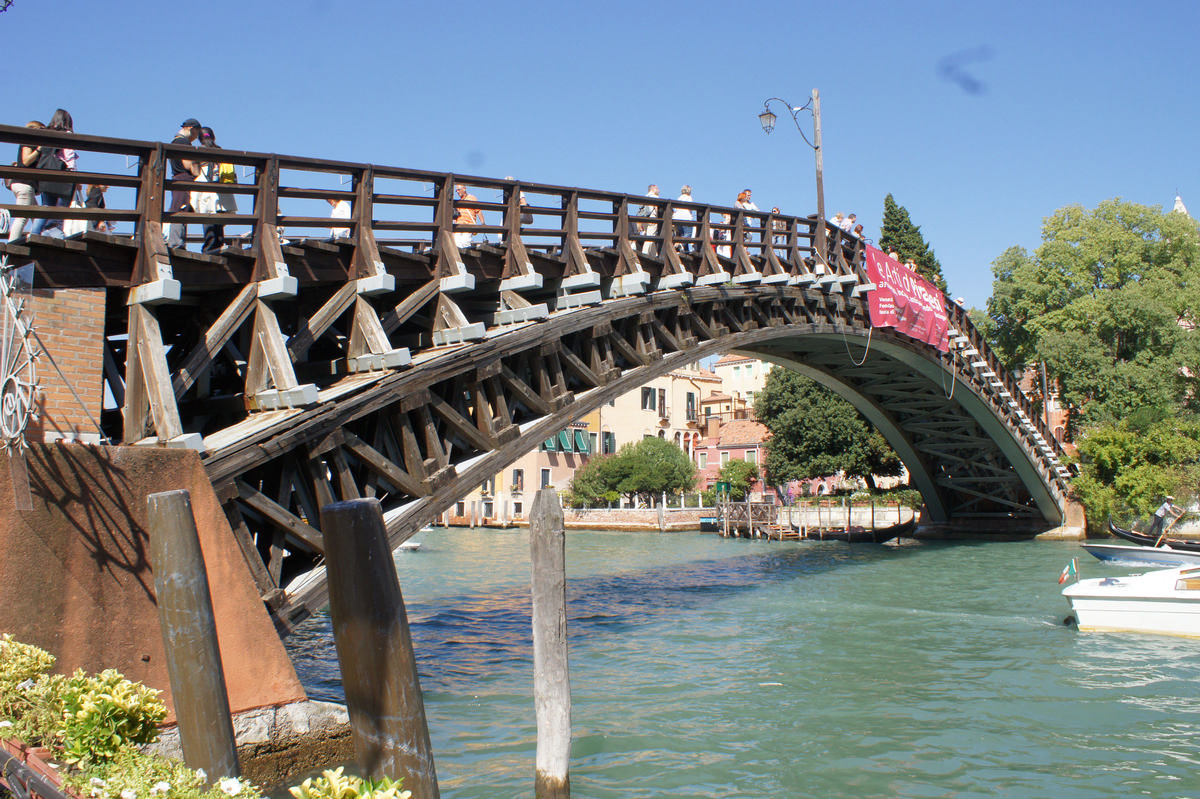
Ponte dell'Accademia
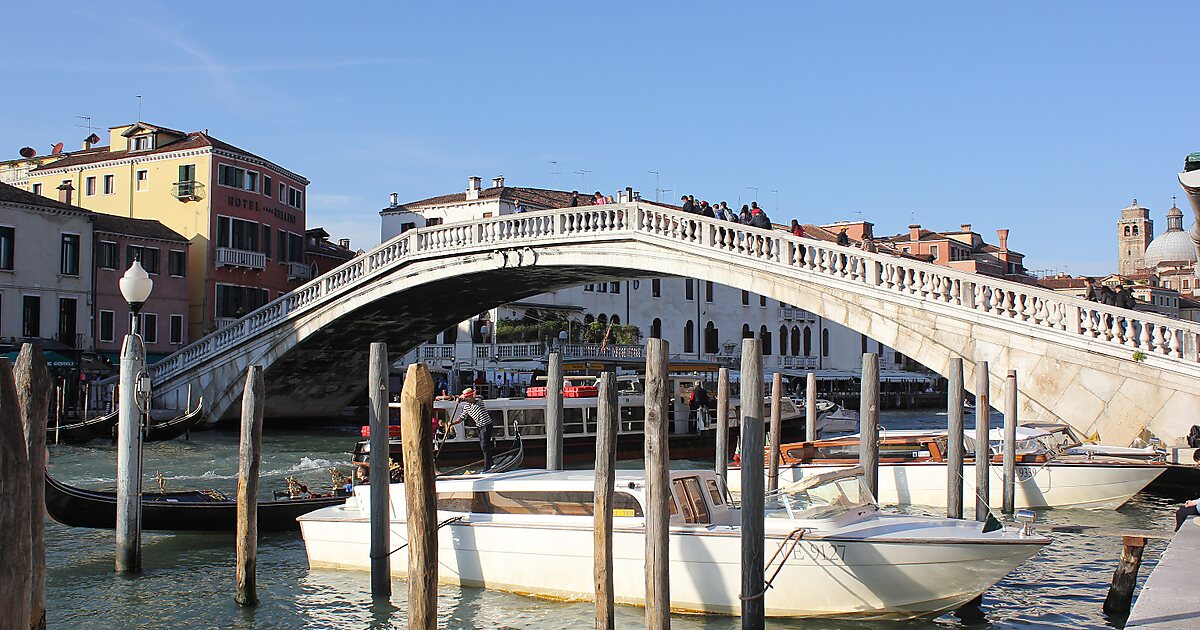
Ponte degli Scalzi

Ponte della Constituzione

Ponte dei Sospiri

Ponte delle Guglie
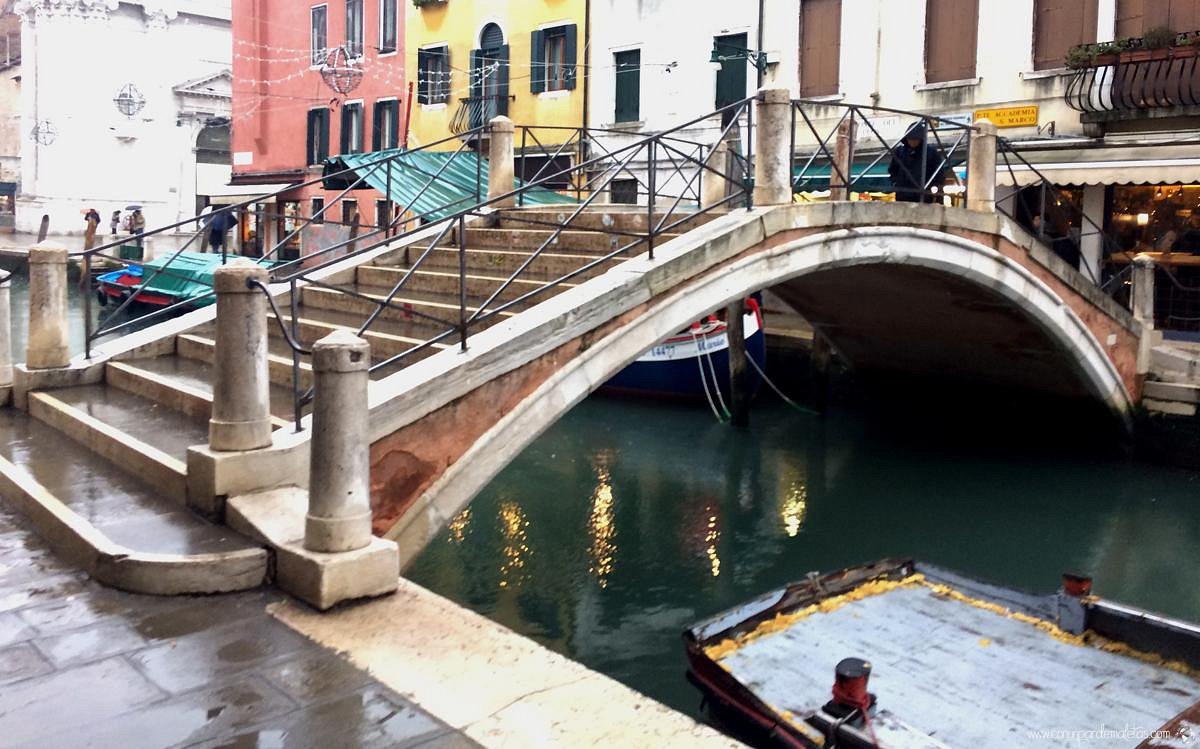
Ponte dei Pugni
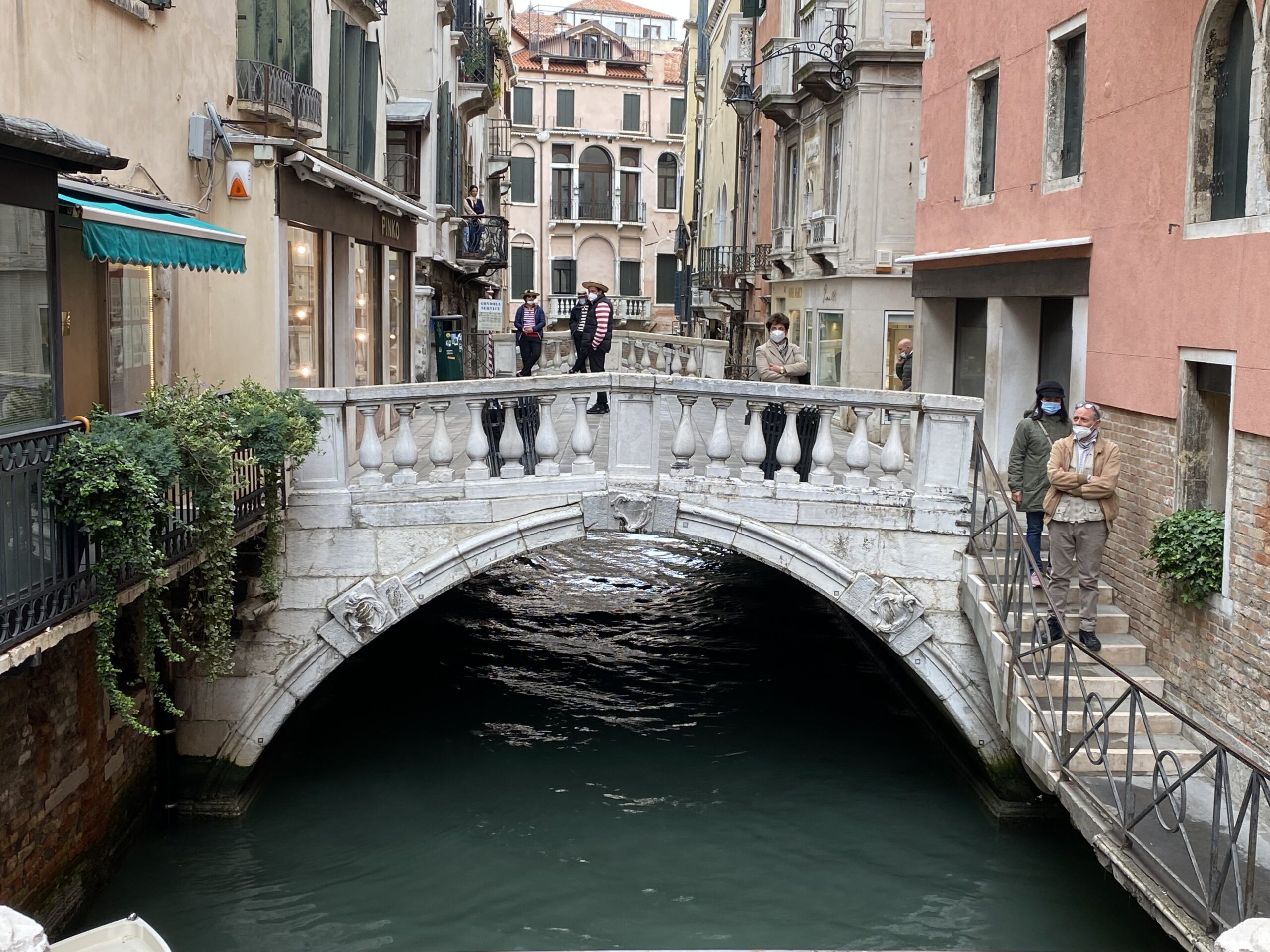
Ponte de Bareteri
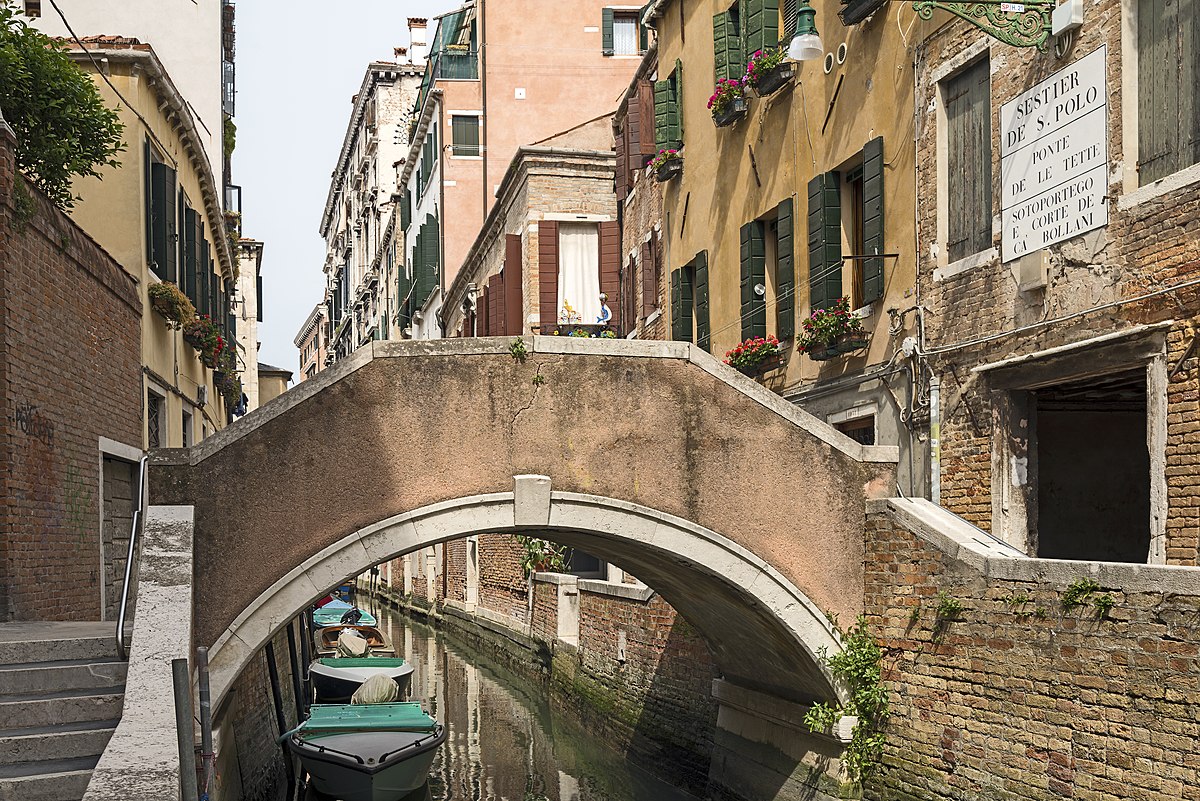
Ponte delle Tette
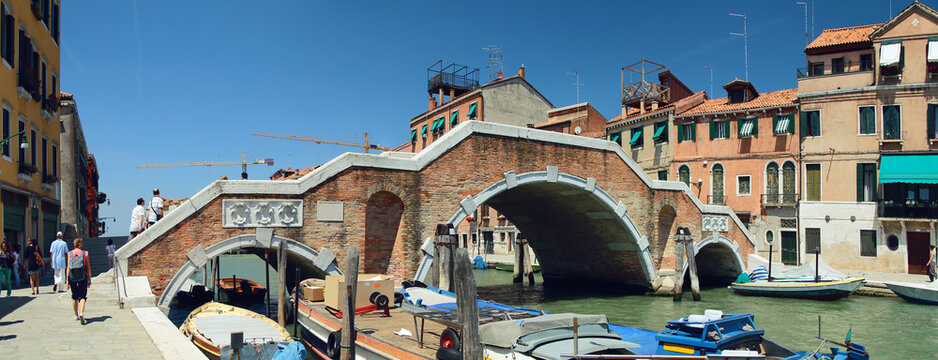
Ponte dei Tre Archi
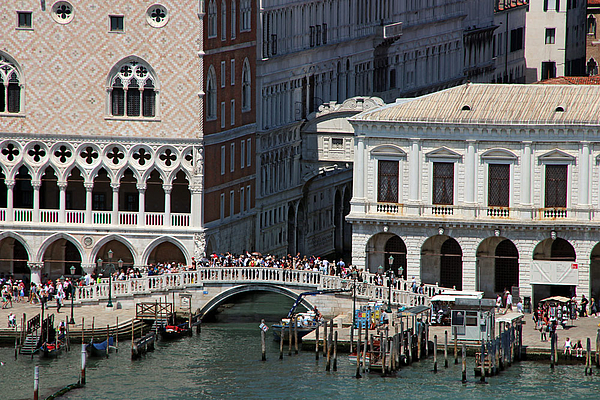
Ponte della Paglia

Ponte Chiodo
Bridges and Boat Traffic
Depending on the height of the boat and the tide level, some bridges may become impassible by boat. The "swipe" map below shows in red the bridges that are impassible at tide levels of -60 cm and 200 cm.
Below is an interactive map where both the tide level and height of the boat can be changed. By hovering over a bridge, you can see the related bridge information.
Venice Bridges